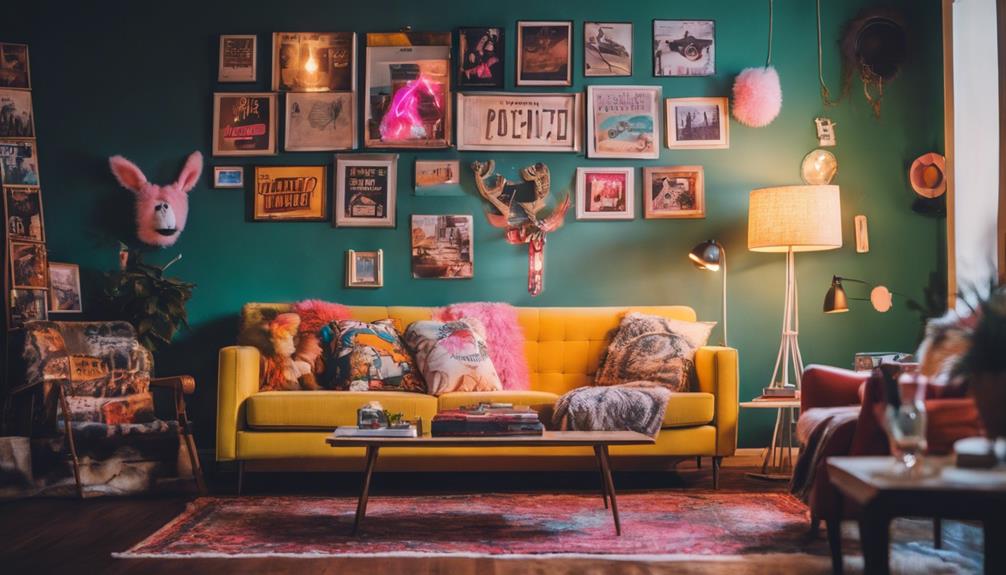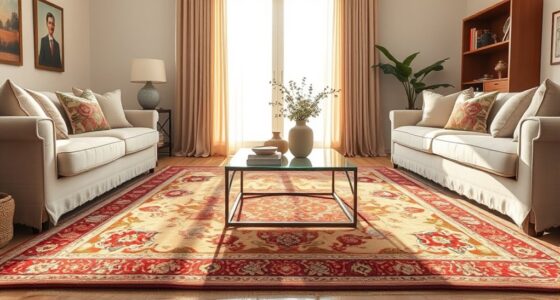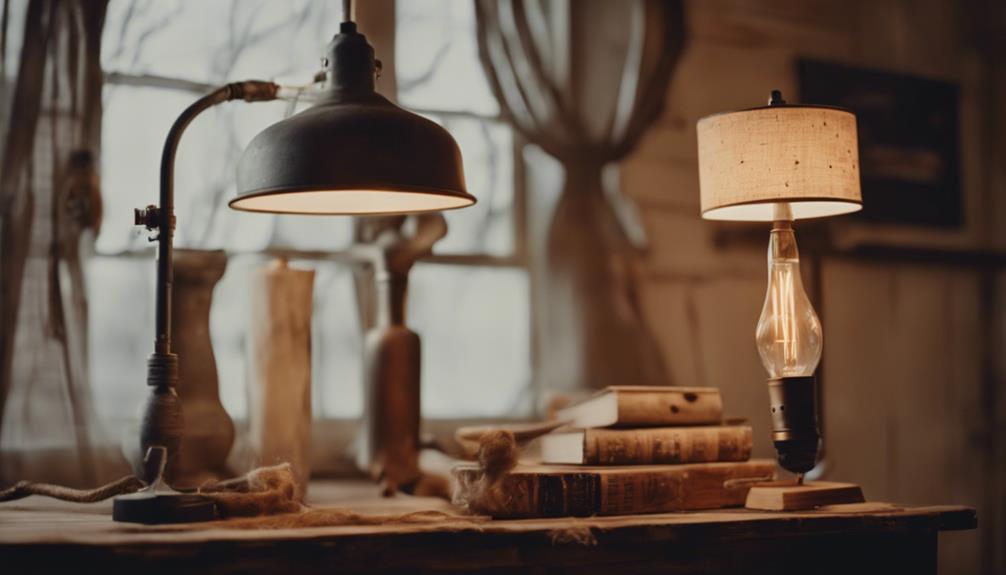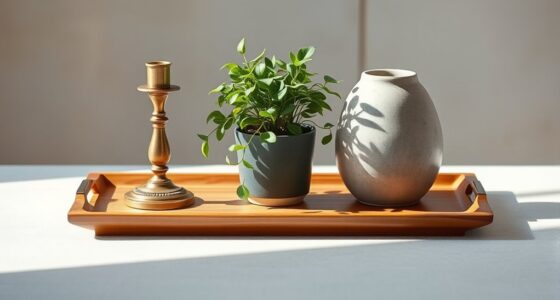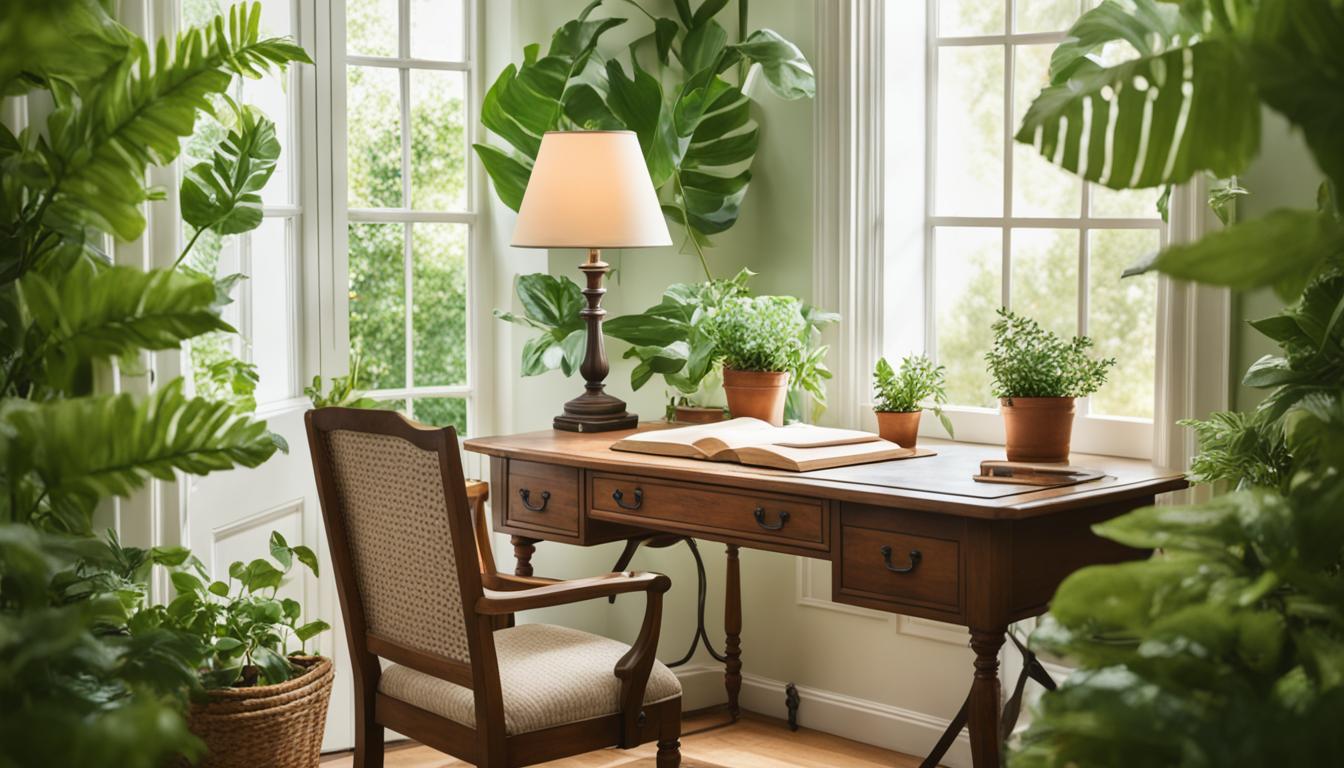When exploring for quirky home decor, delve into the wonders of online platforms like Etsy for unique items such as 'Weird Wall Art' and 'Dopamine Decor'. Additionally, boutique shops and flea markets offer handcrafted and affordable treasures, while local artisan fairs and vintage stores provide one-of-a-kind pieces. Pop-up markets and independent artists' websites showcase diverse selections with sustainable practices. Immerse yourself in the world of Instagram, Pinterest, TikTok, and Facebook groups for more inspiration and tips. Uncover hidden gems in retro furniture, funky wall art, and vintage lamps that add character to your space.
Key Takeaways
- Check online platforms like Etsy for unique and unconventional items.
- Explore boutique shops for handcrafted and whimsical decor pieces.
- Visit flea markets for affordable vintage and retro finds.
- Attend local artisan fairs for one-of-a-kind, personalized decor.
- Browse vintage stores for eclectic and sustainable home decor treasures.
Online Specialty Stores
When we're looking for unique and unconventional home decor items, online specialty stores like Etsy offer a diverse selection of quirky pieces that cater to individual tastes and preferences. Etsy is a hub for handmade and specialized gifts, making it a go-to for those seeking eclectic and unconventional farmhouse decor.
The platform's 'Weird Wall Art' and 'Dopamine Decor' shipping categories cater to those with a taste for the extraordinary. Handmade housewarming gifts and farmhouse decor are particularly popular among shoppers looking to add a touch of individuality to their living spaces.
Quirky home decor gifts like the 'Anemone Planter Maximalist Colorful' and 'Cute Drainage Trays' showcase the creative and unique offerings available on Etsy. For those wanting to infuse their homes with a fun and unconventional vibe, Etsy's selection of items like 'Metal Fish Wall Art' and 'Seasons Art theme' provide endless possibilities to express personal style.
Boutique Shops

Boutique shops specializing in quirky home decor offer a distinct array of unique and eclectic pieces not commonly found in mainstream stores. These shops showcase handcrafted items, vintage treasures, and one-of-a-kind pieces that bring charm and individuality to any living space. With a focus on creativity and unusual design aesthetics, quirky home decor boutiques cater to customers seeking a different kind of style.
Many boutique shops curate a selection of whimsical, fun, and unconventional home decor items, appealing to those looking to add a touch of personality to their homes. By shopping at these stores, customers not only find distinctive pieces but also support small businesses and artisans. This unique shopping experience allows individuals to express their creativity and originality through the decor choices they make.
Flea Markets
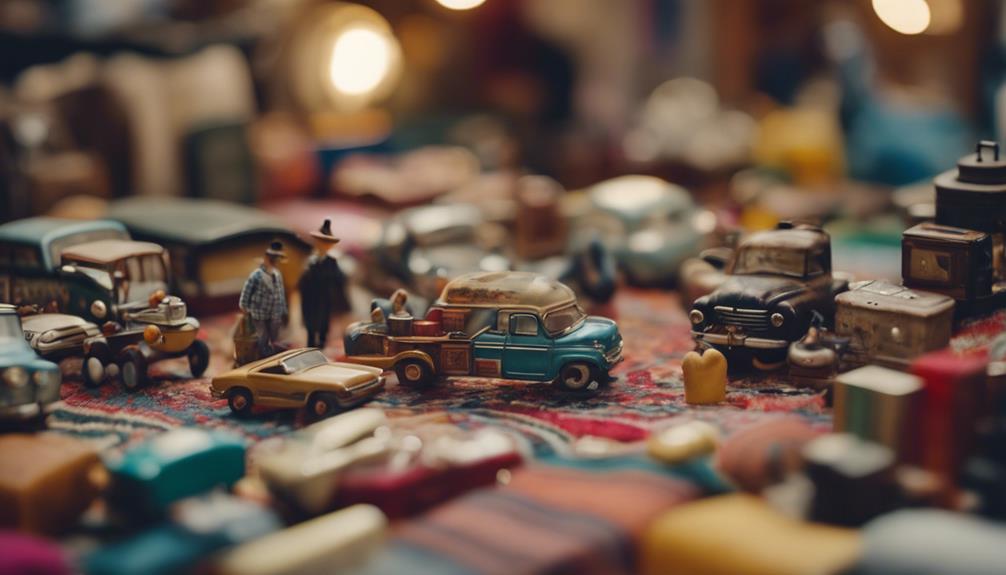
Flea markets offer a treasure trove of quirky home decor items at affordable prices, making them popular destinations for those seeking unique and eclectic pieces. These markets are known for their vintage and retro offerings, providing a wide array of eclectic decor options that can add character to any home.
Shoppers often stumble upon hidden gems at flea markets, discovering one-of-a-kind pieces that aren't typically found in traditional stores. Bargaining is a common practice at flea markets, allowing buyers to negotiate prices and snag deals on quirky decor pieces.
The affordability of items at flea markets makes them ideal for those looking to decorate their homes with distinctive and eye-catching pieces without breaking the bank. Whether you're searching for a statement piece or small accents to enhance your space, flea markets are sure to have a unique selection of quirky home decor items to suit your style.
Local Artisan Fairs

Local artisan fairs showcase a variety of unique home decor items crafted by talented local artisans. These fairs offer a chance to support small businesses while adding one-of-a-kind pieces to your home decor collection.
Handmade items not typically found in mainstream stores provide a special flair to your living space.
Artisan-Made Unique Finds
Exploring artisan-made unique finds at local fairs offers a delightful journey into the world of handcrafted home decor. These events showcase quirky and eclectic decorative accents, ranging from funky wall art to exclusive pieces not found in mainstream stores. Local artisan fairs provide a platform for talented individuals to display their one-of-a-kind, artisan-made items.
By browsing these fairs, visitors not only discover unique home decor but also have the chance to support local artists directly. The artisan-made quirky home decor available at these fairs adds a personalized touch to any living space while fostering creativity within the community.
Embracing these exclusive pieces not only enhances your home but also contributes to the vibrant tapestry of local artistry.
Support Local Talent
Discovering the vibrant array of unique and quirky home decor items at artisan fairs is an enriching experience that celebrates local talent and creativity. Attending these fairs not only allows you to find personalized and exclusive pieces for your home but also supports the talented individuals in your community.
When you explore artisan fairs, you can:
- Uncover handmade treasures that are one-of-a-kind
- Connect with the creators behind the quirky decor pieces
- Discover decor items that are truly unique
- Explore a diverse range of personalized home decor products
- Support local talent and contribute to the community's creative spirit
Handcrafted One-Of-A-Kinds
At artisan fairs, we can uncover an array of handcrafted one-of-a-kind quirky home decor pieces that add a unique touch to our living spaces. Local artists showcase their creativity through a diverse selection of items, including wall art and functional pieces like vases and sculptures.
These quirky home decor pieces are exclusive and not typically found in mainstream stores. By supporting local makers at artisan fairs, we contribute to the growth of the creative community and discover hidden gems that reflect the individuality of the artists.
Shopping at these events not only allows us to find unique decorations for our homes but also enables us to connect with the stories behind each handcrafted piece.
Vintage Stores
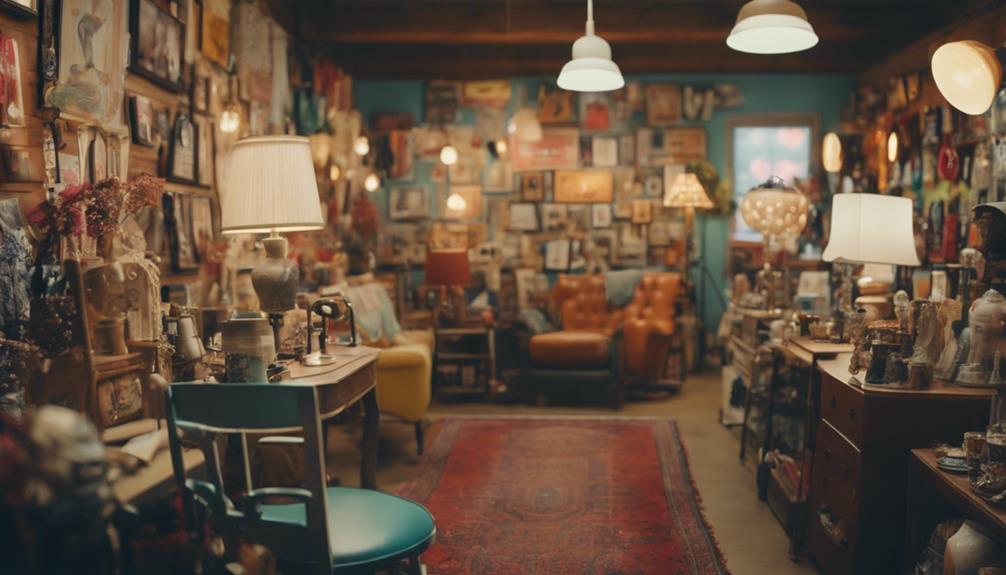
Vintage stores are treasure troves filled with unique and quirky home decor pieces that can add a touch of character to any room. These stores offer a diverse selection of vintage treasures, from retro lamps to funky accessories, catering to eclectic decor styles.
Explore and uncover one-of-a-kind items like ceramic vases, abstract trays, and artistic wall accents hidden within the shelves of vintage stores.
Unique Finds Unearthed
Discovering unique finds at vintage stores reveals a world of eclectic and nostalgic home decor options.
- Retro lamps
- Funky rugs
- Eclectic glassware
- Artistic home accents
- Individuality
Vintage stores are treasure troves filled with one-of-a-kind pieces that can add character and charm to any living space. From retro lamps that bring a touch of the past to funky rugs that make a bold statement, these stores offer a diverse range of items to suit various tastes.
The eclectic glassware and artistic home accents found in vintage stores are perfect for those looking to infuse their decor with personality and nostalgia. Embrace your individuality by exploring the unique treasures waiting to be unearthed in vintage stores.
Hidden Gems Discovered
Unearthing hidden gems in vintage stores can transform your home decor into a unique and eclectic masterpiece. When browsing through these stores, you'll come across a plethora of one-of-a-kind items that exude a quirky charm perfect for adding character to your living space. Vintage stores are like treasure troves, offering an array of eclectic pieces that you won't find in mainstream stores. By choosing pre-loved items from these stores, you're not only creating a distinctive home environment but also contributing to sustainability by giving new life to old treasures. These unique finds serve as excellent conversation starters, elevating your decor with their history and individuality. Explore these hidden gems and let your home tell a story.
| Vintage Stores | Conversation Starters | Sustainability |
|---|---|---|
| Unique Home Decor | Quirky Items | Hidden Gems |
| One-of-a-Kind | Eclectic Finds | Pre-Loved Items |
Eclectic Treasures Await
Exciting treasures filled with character and history await at vintage stores, offering a diverse selection of unique and one-of-a-kind home decor items. When exploring these eclectic havens, you may stumble upon:
- Retro furniture pieces that add a nostalgic touch to your space.
- Funky wall art that serves as a conversation starter.
- Unusual accents like vintage lamps or quirky figurines to showcase your personality.
- Items sourced from estate sales, auctions, and flea markets, ensuring a mix of styles and eras.
- A commitment to sustainable practices, as shopping at vintage stores gives new life to pre-loved items and supports eco-friendly decor choices.
Pop-up Markets
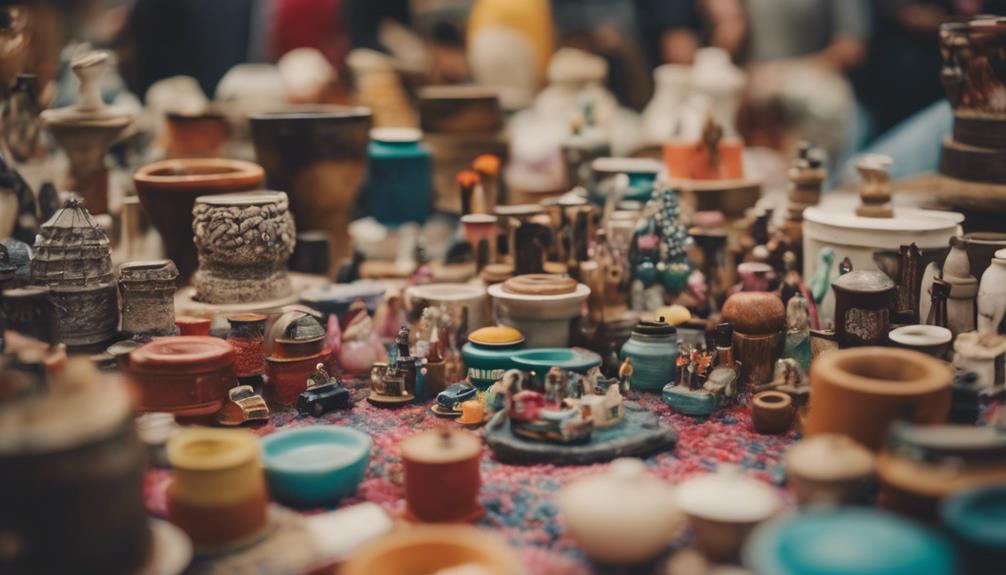
In our quest for unique home decor pieces, we often stumble upon pop-up markets, temporary retail spaces showcasing the creativity of local artisans and designers. These markets provide a platform for small businesses to display their handmade products, offering a diverse selection of quirky home decor. Customers can expect to find a wide range of unconventional and eye-catching pieces at these markets, making them a treasure trove for those in search of unique items.
Pop-up markets are known for creating a vibrant and dynamic shopping experience. Shoppers have the opportunity to interact directly with creators, gaining insight into the inspiration behind the pieces on offer. These markets can be found in various locations, from empty storefronts to outdoor spaces and event venues. Whether you're looking for a statement piece for your living room or a quirky addition to your kitchen, pop-up markets are sure to have something that catches your eye.
Independent Artists' Websites
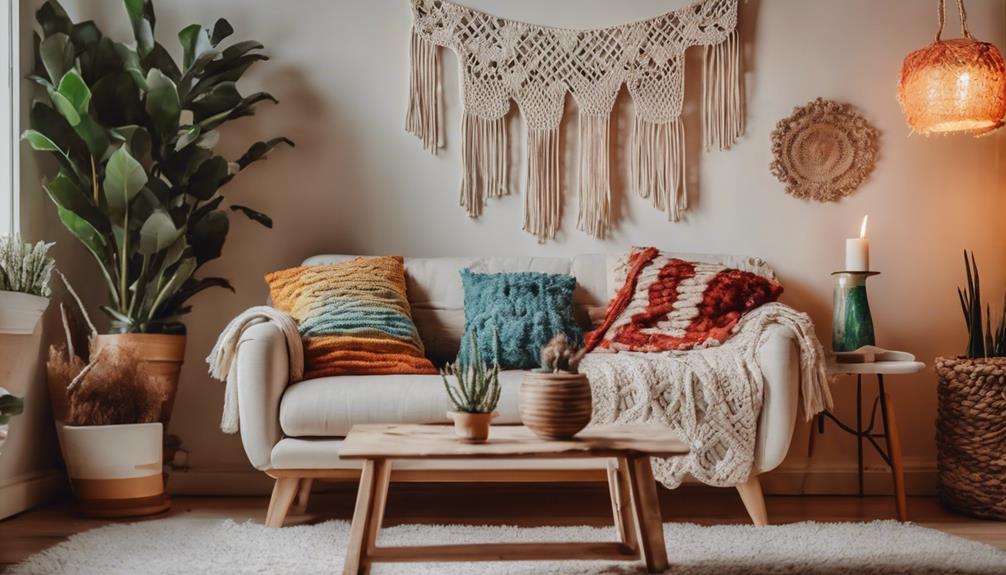
Perusing independent artists' websites like Etsy reveals a diverse array of quirky home decor items crafted by talented individuals. These platforms offer a unique shopping experience where you can discover handmade and unconventional pieces that bring a creative flair to your living space. Here are five reasons why exploring independent artists' websites can elevate your home decor:
- Find one-of-a-kind items that add a personal touch to your space.
- Support small businesses and independent artists with your purchases.
- Discover unique items that aren't typically available in mainstream stores.
- Enjoy the creativity and craftsmanship of talented individuals who pour their passion into each creation.
- Add a conversation starter to your home with quirky and unconventional decor pieces that stand out.
Social Media Platforms
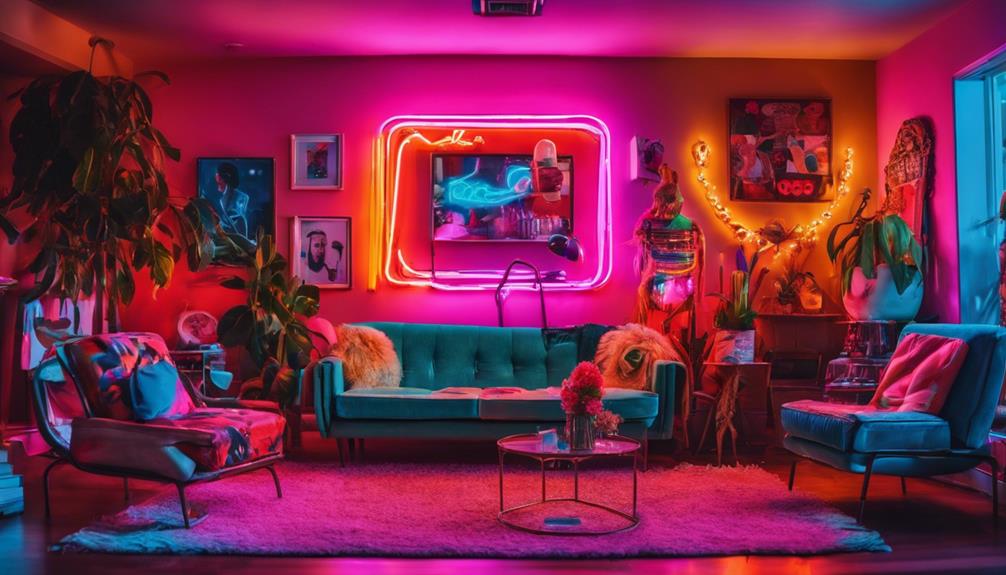
After exploring independent artists' websites for unique home decor, turning to social media platforms can provide additional avenues to discover quirky and unconventional design inspirations. Instagram, known for its visually appealing content, is a popular platform for finding quirky home decor. By following hashtags like #quirkyhomedecor and dedicated accounts, you can stumble upon a plethora of unique ideas.
Pinterest, on the other hand, offers a treasure trove of quirky home decor ideas and DIY projects through its boards and pins showcasing eclectic and unusual designs. TikTok, with its short videos and trends, has a growing community of creators sharing quirky home decor tips and shopping recommendations.
Additionally, Facebook groups focused on home decor enthusiasts often share unique and quirky finds, along with recommendations for offbeat decor stores and online shops. Engaging in Twitter chats and conversations surrounding home decor trends can also lead to discovering niche brands and artists specializing in quirky and unusual home decor pieces.
Frequently Asked Questions
What Is the Most Sold Home Decor?
The most sold home decor items on Etsy are the Rose Family Inspired Balloons Creek Birthday Party Decor and the Snake with flower crown plant pal accessory, with both being popular quirky choices. These unique pieces cater to those seeking distinctive home decor accents that add a touch of whimsy and personality to their living spaces.
Etsy's platform showcases a diverse array of creative and handcrafted items that appeal to a wide audience looking for something special.
How to Do Dopamine Decor?
To do Dopamine Decor, focus on:
- Bold colors
- Unique designs
- Quirky accents
Create a visually stimulating space that evokes joy and excitement. Incorporate:
- Eclectic pieces
- Vibrant artwork
Reflect your personality and style. Aim for a lively and dynamic environment inspired by the neurotransmitter dopamine, associated with pleasure and reward.
How Can I Make My Home Decor Beautiful?
To make our home decor beautiful, we combine unique elements like resin night lights, metal wall art, and handmade paper foldable lamps for a personal touch.
Seeking specialized pieces such as custom garden decor and ceramic art tiles adds a one-of-a-kind flair.
Exploring niche categories like 'Weird Wall Art' on platforms like Etsy can uncover unconventional options.
Trendy items like positive affirmations prints and vintage wall art enhance our space with style and charm.
How Can I Decorate My Home in Style?
When decorating our home stylishly, we focus on incorporating unique and quirky decor items like resin night lights, metal wall art, and handcrafted paper lamps for a chic touch.
We explore specialized pieces such as custom garden decor, ceramic art tiles, and teal wall clocks to infuse personality into the space.
Trendy wall decor items like vintage prints, giclée art, and twist vases from the Meadow Collection offer a fashionable look.
Conclusion
So, if you're looking to spruce up your living space with some unique and quirky decor, there are plenty of options to choose from.
Whether you prefer shopping online, exploring local markets, or supporting independent artists, there are endless possibilities to find that perfect conversation starter for your home.
So go ahead, let your creative side shine and discover the hidden gems waiting to be found in the world of quirky home decor.
